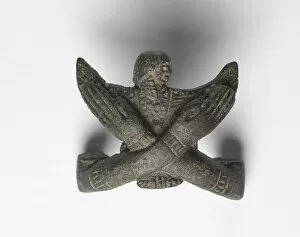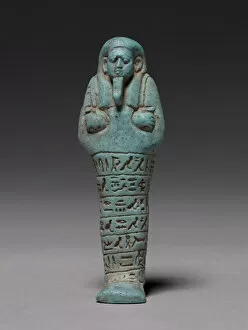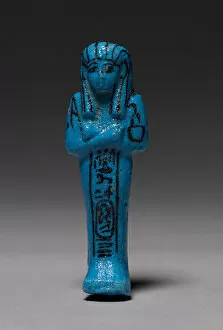Shawabty Collection
"Exploring the Enigmatic Shawabty
For sale as Licensed Images
Choose your image, Select your licence and Download the media
"Exploring the Enigmatic Shawabty: A Glimpse into Ancient Egyptian Life" Step back in time and delve into the fascinating world of ancient Egypt with these remarkable shawabty artifacts. From intricately painted wood to exquisite bronze mounts, each piece offers a unique glimpse into the beliefs and customs of this ancient civilization. The Shawabty Box of Ditamenpaankh, dating back to 715-656 BC, showcases an extraordinary level of craftsmanship. Its painted wood exterior tells the story of a nobleman's journey through the afterlife, accompanied by his loyal servants. One particularly intriguing artifact is the Bronze Mount from a Shawabty Bundle featuring crossed arms. This pose symbolizes eternal rest and servitude in the afterlife, highlighting their role as substitutes for their owners' labor in eternity. Another captivating find is the Bronze Mount depicting an arm with a feather. Feathers were associated with Ma'at, goddess of truth and justice, suggesting that these shawabtys were tasked with maintaining order and balance even beyond death. The pale turquoise Shawabty of Ankh-Hor exemplifies how color played a significant role in Egyptian artistry. Adorned with vitreous Egyptian blue accents, it reflects their belief in rebirth and renewal as they embarked on their eternal journey. Pinudjem I's shawabty stands out due to his dual roles as High Priest of Amen and King during Egypt's Third Intermediate Period. This particular artifact provides insight into how influential figures sought assurance that they would be well taken care of in the afterlife. Bronze Mounts from various bundles offer glimpses into different body parts such as heads or feet. These fragments remind us that these figurines were often part of larger collections meant to accompany individuals throughout eternity. Tashery's painted tamarisk shawabty adds another layer to our understanding.







